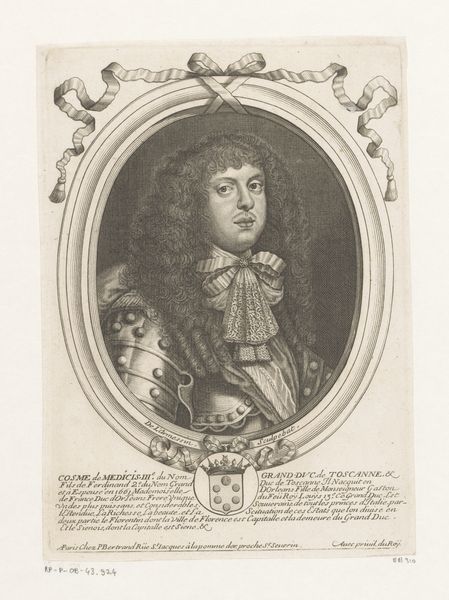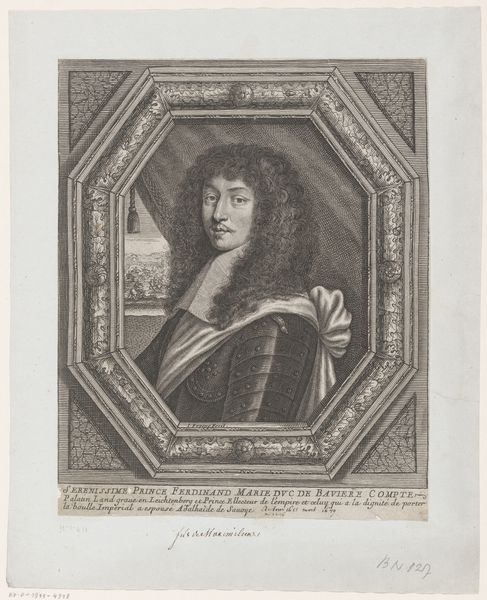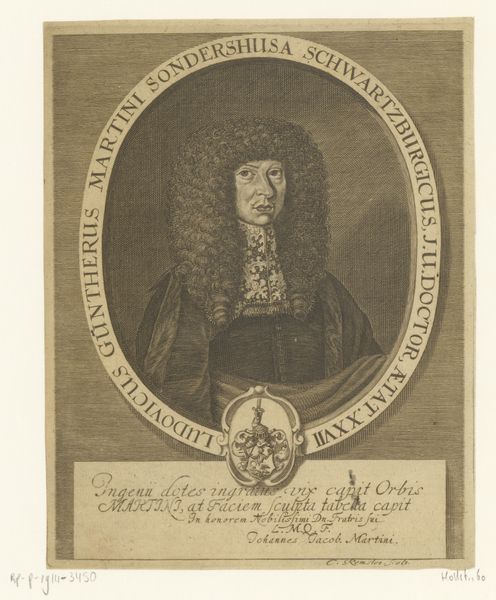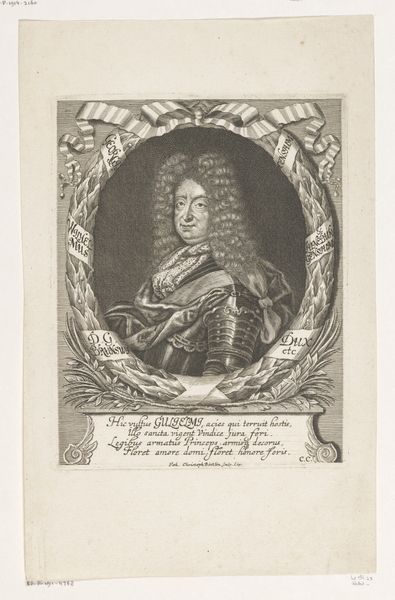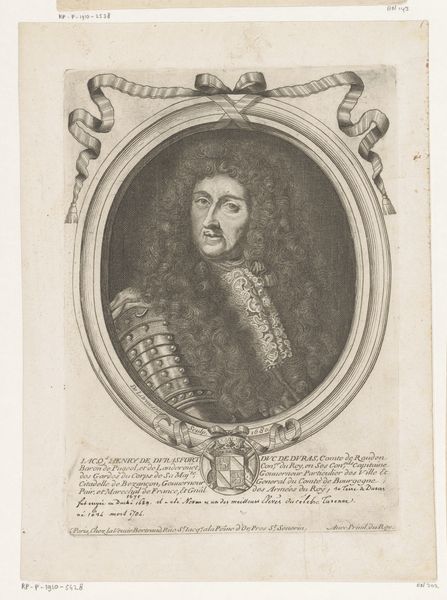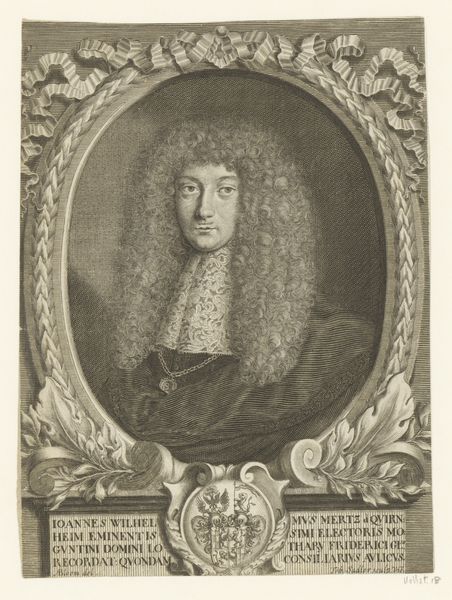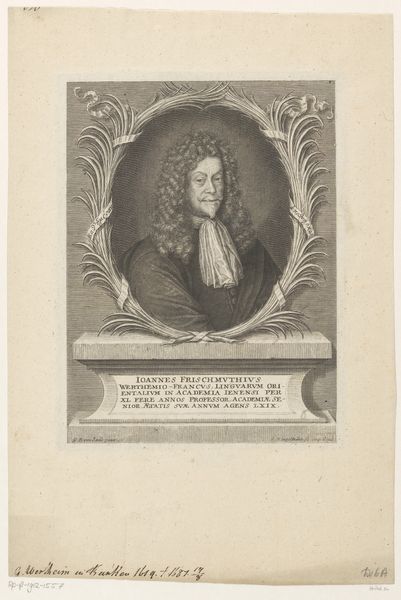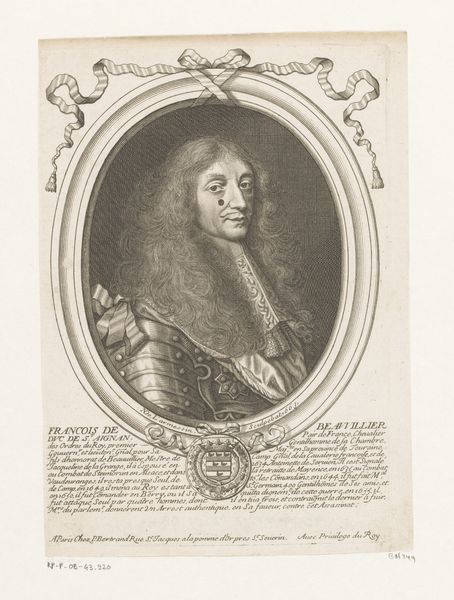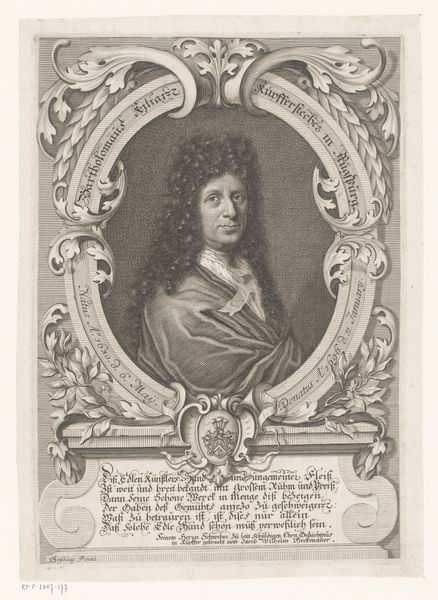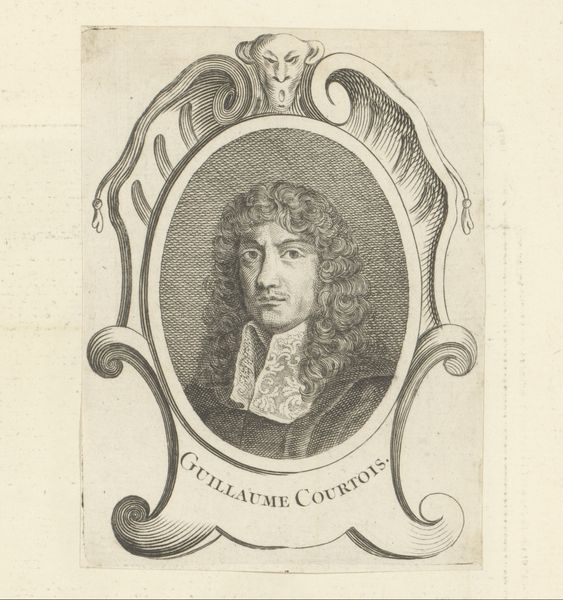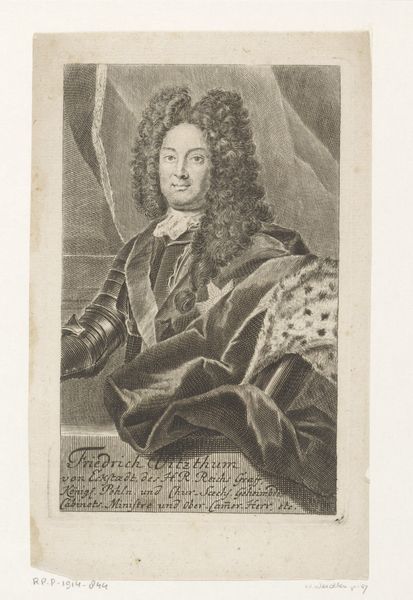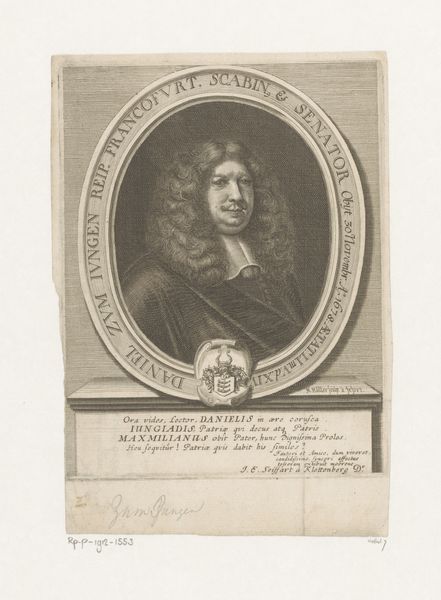
engraving
#
baroque
#
history-painting
#
academic-art
#
engraving
Dimensions: height 179 mm, width 140 mm
Copyright: Rijks Museum: Open Domain
Curator: This is Nicolaus Häublin’s “Portret van Christian Gastel,” dating sometime between 1663 and 1685. It’s an engraving. Editor: It feels like looking through a meticulously crafted window into another time. The fine lines create a delicate yet formal image. I am very intrigued by the subject's large wig. Curator: The elaborate wig and decorative frame immediately signal status and position. Portrait engravings like these circulated widely, functioning as social currency, cementing Gastel's image and authority within intellectual circles. Note the inscription at the bottom further reinforcing the idea of him as a figure to be studied and remembered. Editor: And it's the inscription that hints at the process of creation, the skilled labor involved. Someone meticulously etched those lines, translating an image into a reproducible format. You have to imagine how many of these prints were made, and the cost implications would reflect its place in a hierarchy of artistic mediums, with engravings holding a significant role in disseminating knowledge and constructing reputation. Curator: Precisely. Engravings like this served a crucial function in the Baroque era. Before widespread photography, they were instrumental in shaping public perception, creating lasting visual records of influential figures. The decision to depict Gastel in this manner—framed, dignified, almost classical in presentation—was certainly a calculated one. Editor: It's a testament to the power of materiality, isn't it? Ink on paper, yet imbued with so much social weight, constructing not only an image but an identity that could be replicated and circulated throughout society. It makes me wonder about the economics of printing at that time, how many artists were working behind the scenes in workshops to realize the vision that others get credit for. Curator: I completely agree. Considering its dual role as a historical document and a crafted object provides a deeper understanding of how art functioned within its society. Editor: This has opened my eyes to the many layers behind this elegant artwork! It is wonderful to consider its original production and cultural context.
Comments
No comments
Be the first to comment and join the conversation on the ultimate creative platform.
